Stale Sandbech Q&A: Best Air+Style memories, learning new tricks, more
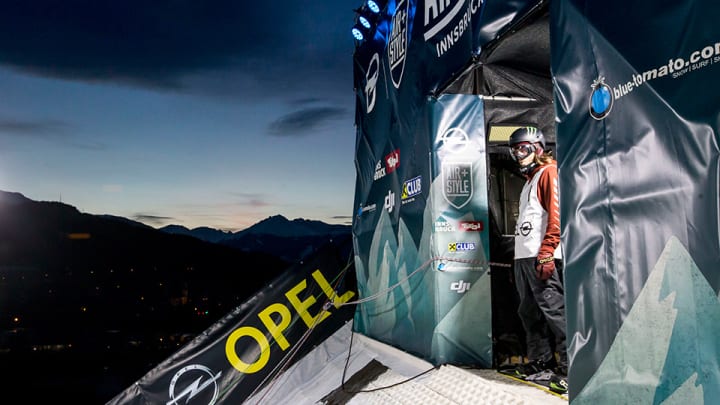
Norwegian snowboarder Stale Sandbech, the reigning champion of the complete Air+Style tour, has been on a very good run over his last two seasons. He won silver at the 2014 Winter Olympics and won the A+S overall title last year. Sandbech won silver at the 2015 X Games Slopestyle competition. He didn’t medal this year at X Games in either the Big Air or Slopestyle events, but he did take silver in slopestyle at Dew Tour this season, solidifying his place as a perennial contender in any competition he enters.
Sandbech comes into Air+Style LA as the overall leader of the international competition and is one more leg away from defending his A+S crown. SI.com caught up with Sandbech ahead of A+S this weekend to talk about the season, his career and more.
***
Ryan Wallerson:Talk about your experience at Air+Style Innsbruck.
Big Air at Fenway Park

Fenway Park’s Green Monster dressed up for the Polartec Big Air competition.
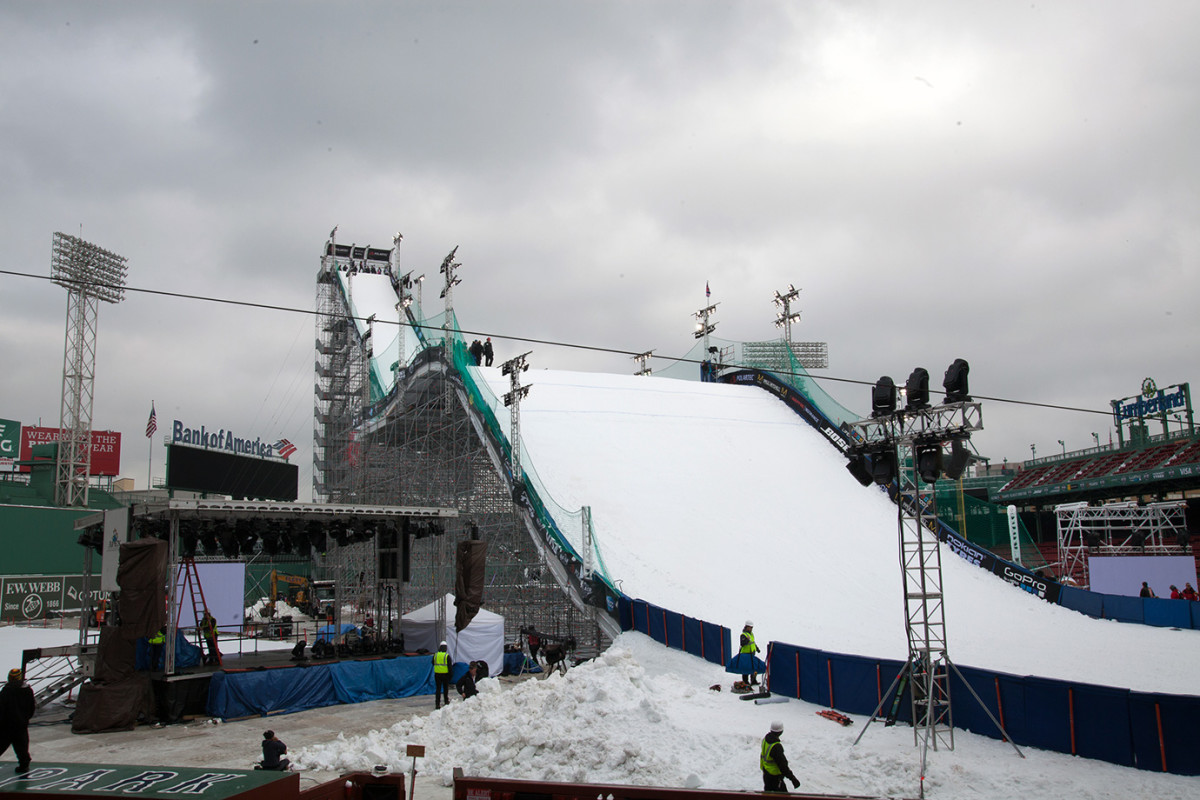
The 150-foot-ramp, which extended from home plate out to left center field, took nearly three weeks to build and was 10 feet taller than originally anticipated.
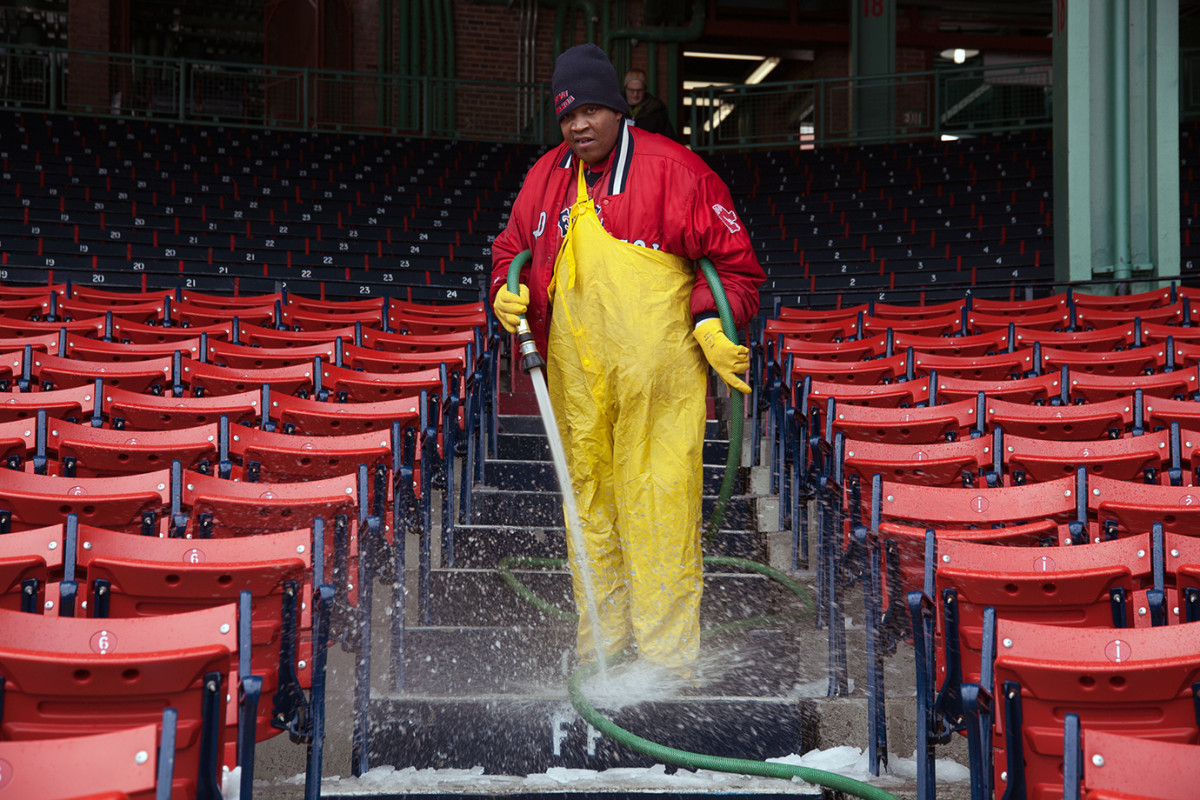
A member of the Fenway Park grounds crew prepares the lower bowl seating for the big crowds expected for the two-night event.
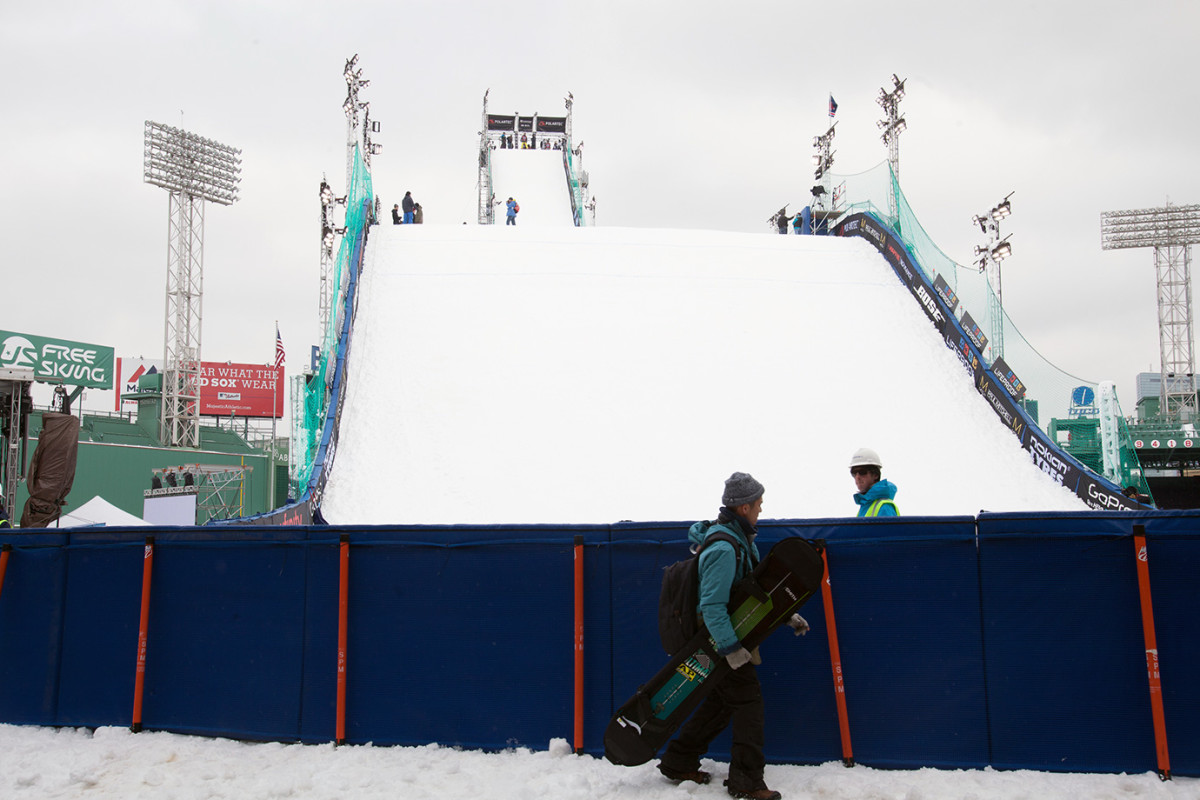
Athletes practice on the ramp, sizing up the man-made jump and figuring out their plans for the coming event.
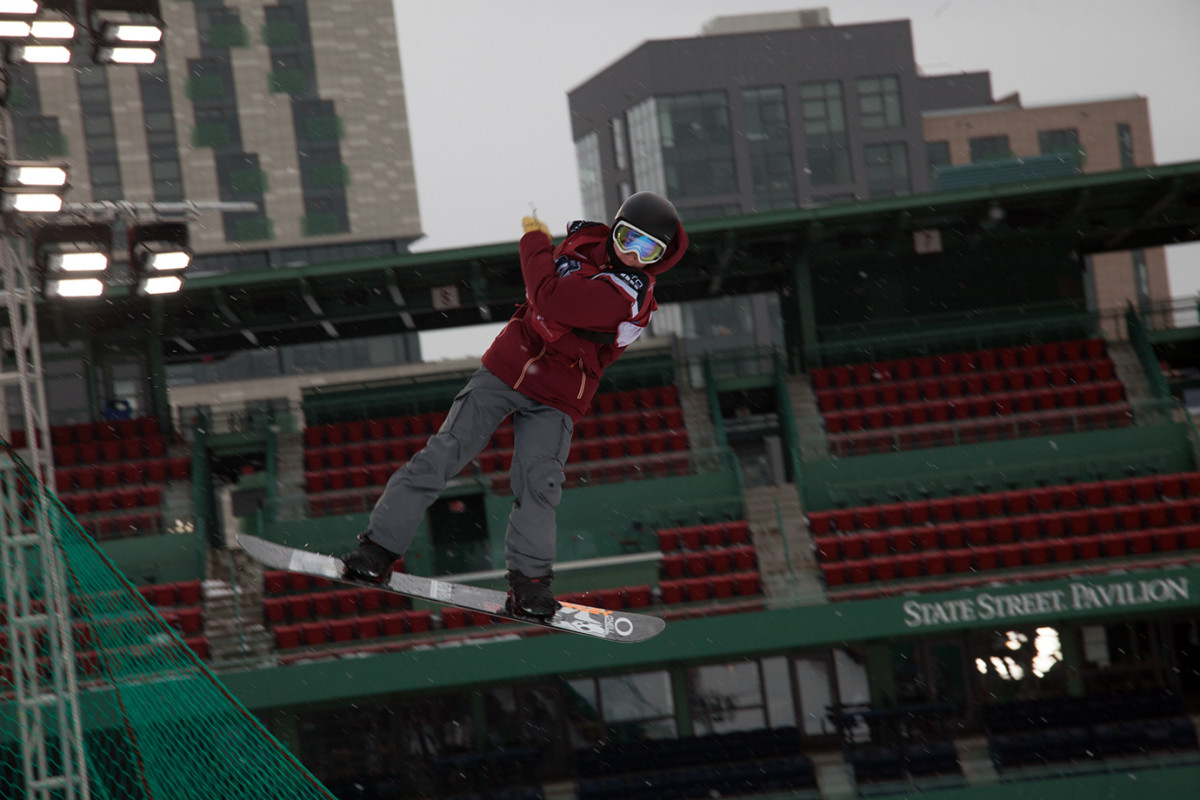
A snowboarder tests the ramp, catching air in front of a very unfamiliar backdrop for a ski or snowboard event.
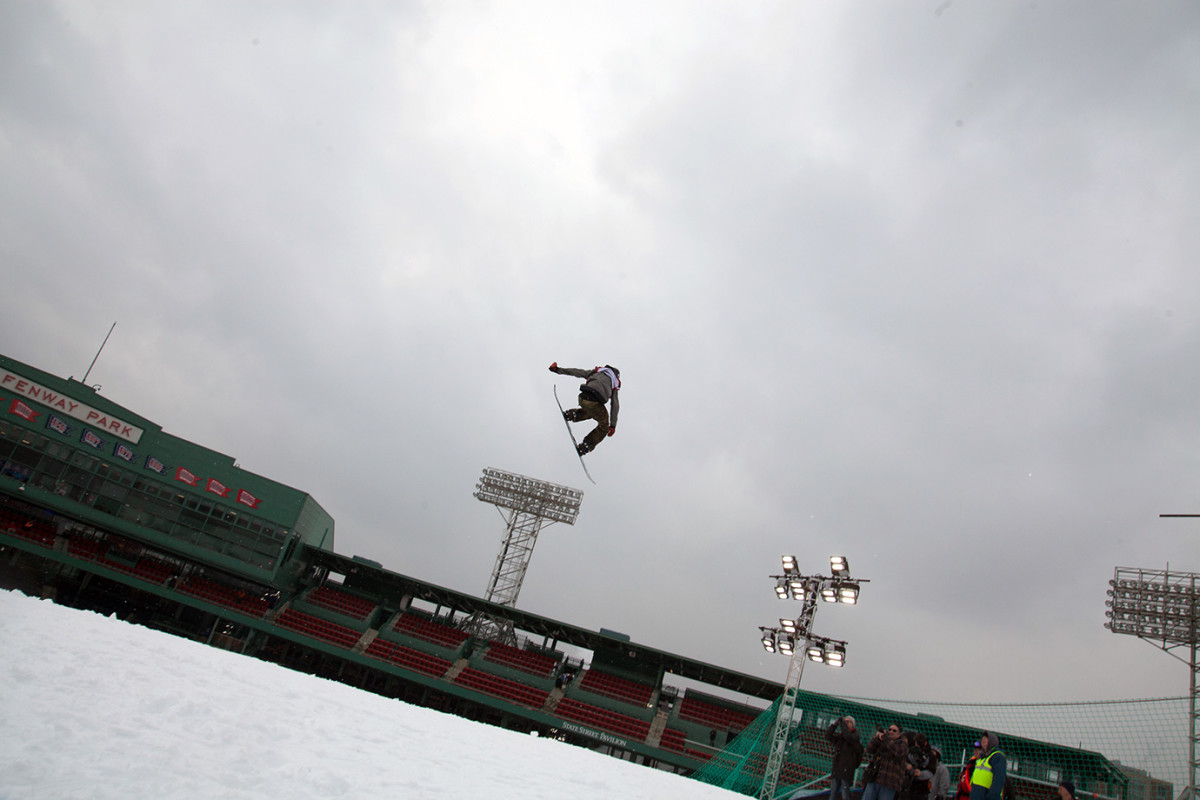
A snowboarder rises above the iconic Fenway Park sign during Polartec Big Air practice.
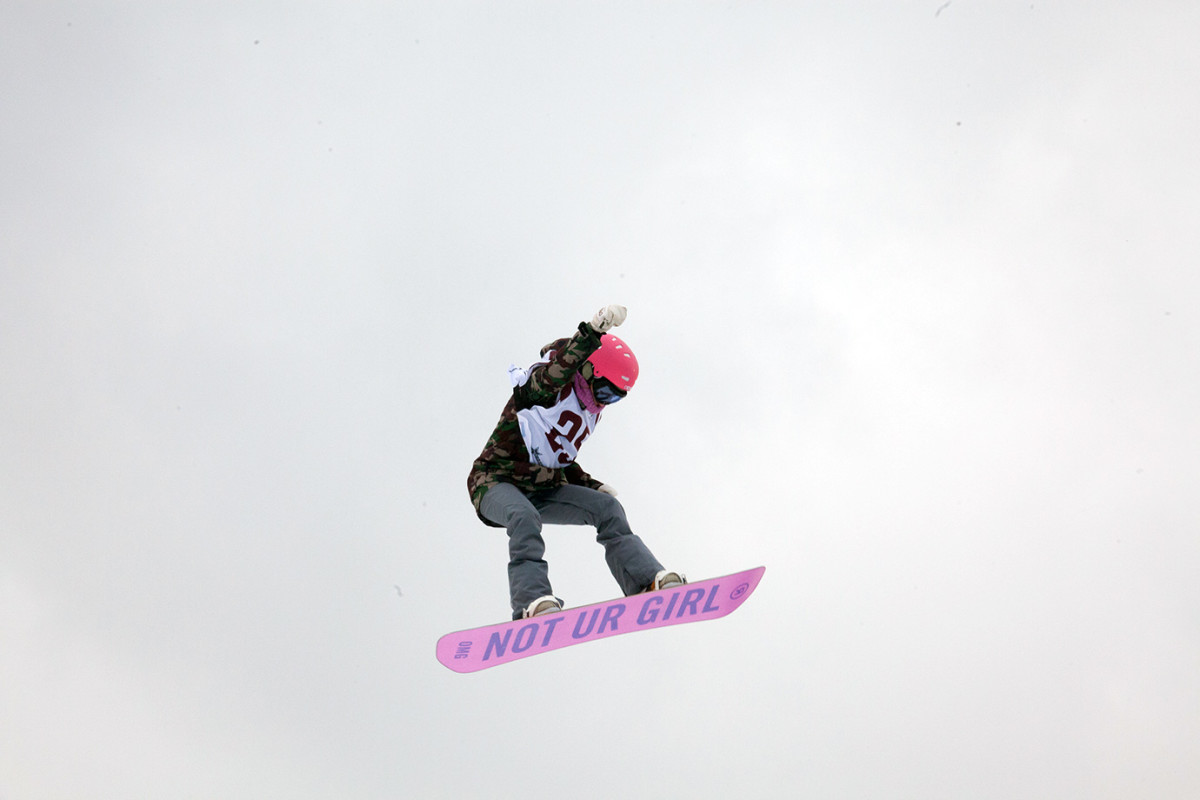
Just like this year’s X Games Olso Big Air competition, the Big Air competition at Fenway was open to female snowboarders and skiers. The big air event was added to the women’s World Cup and U.S. Grand Prix seasons in 2015.
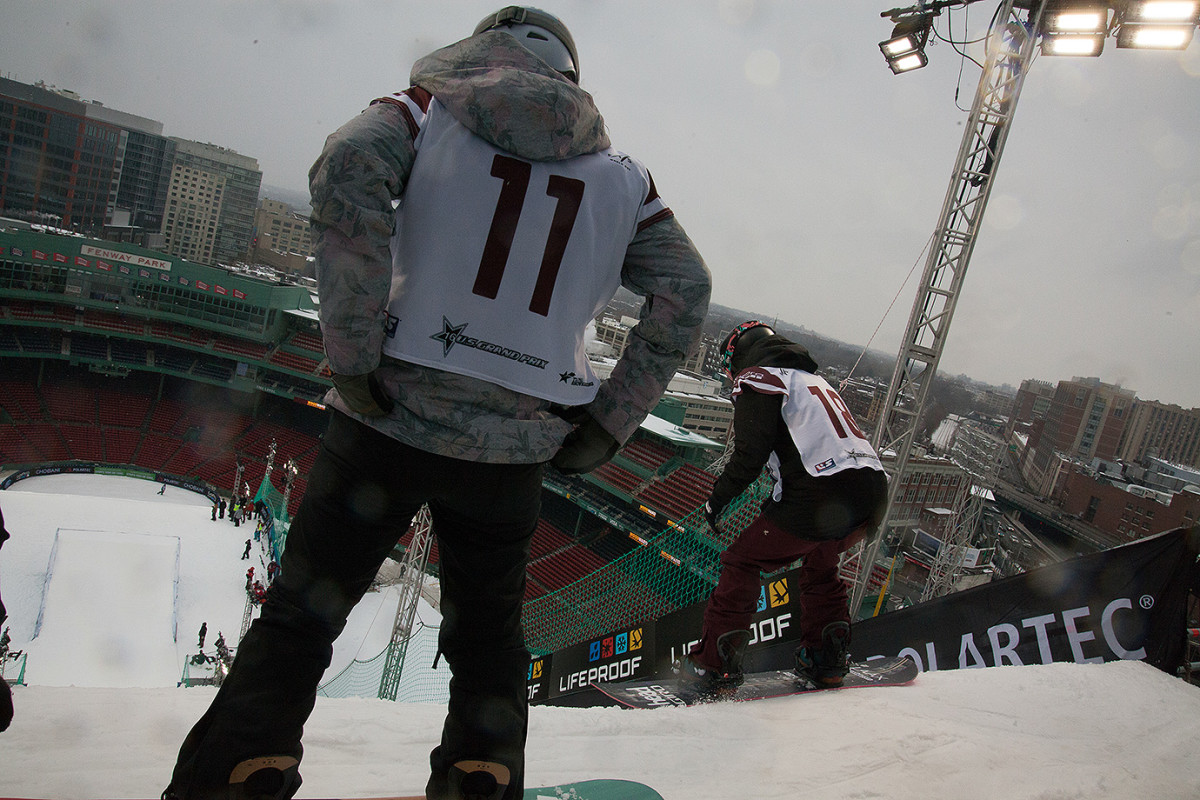
A couple of riders sized up the 150-foot jump from the very top during practice.
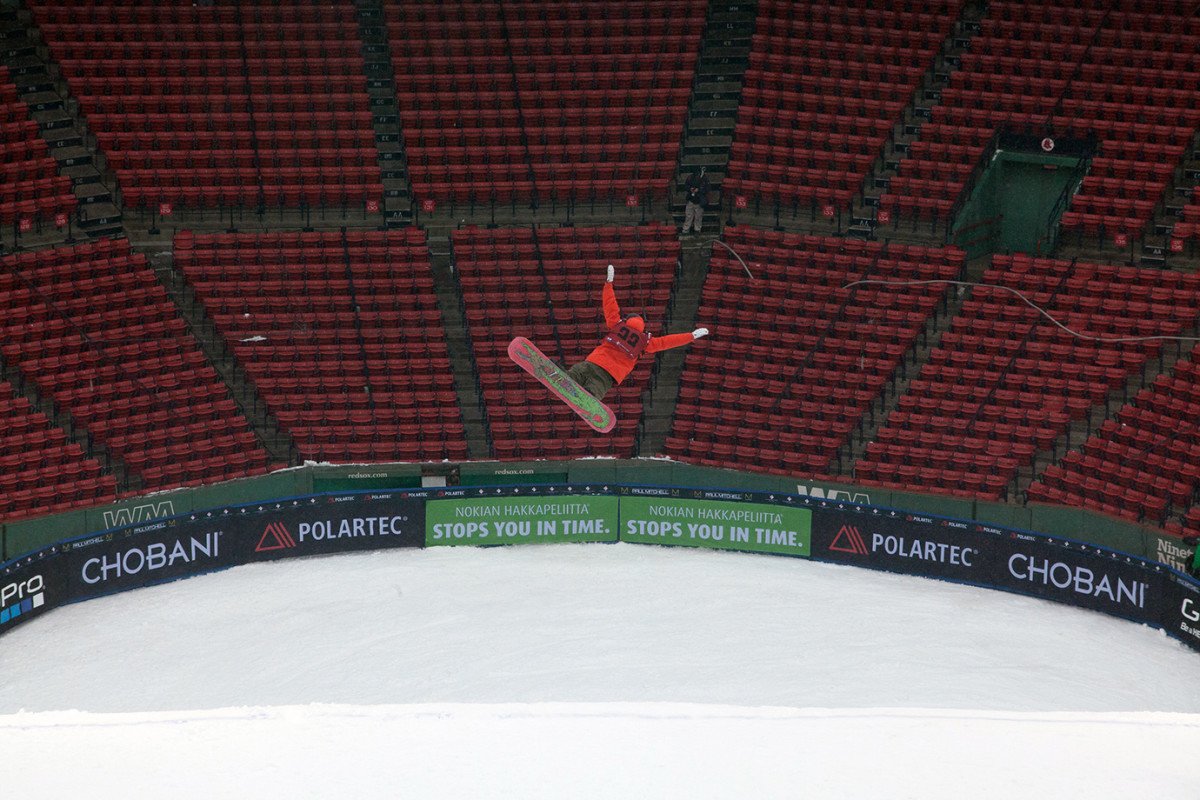
The athletes had a lot of fun with the novelty of holding a big air event in Boston’s Fenway Park.
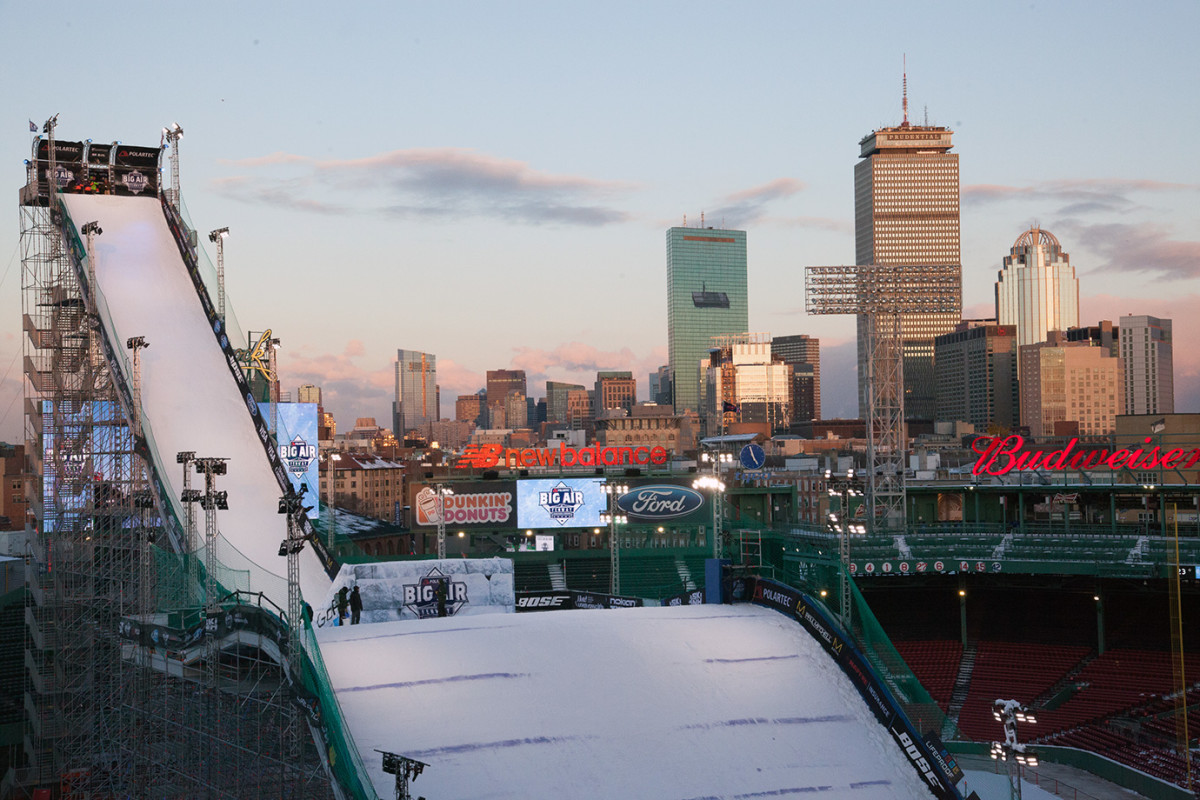
The Big Air ramp as the sun set over Fenway Park.
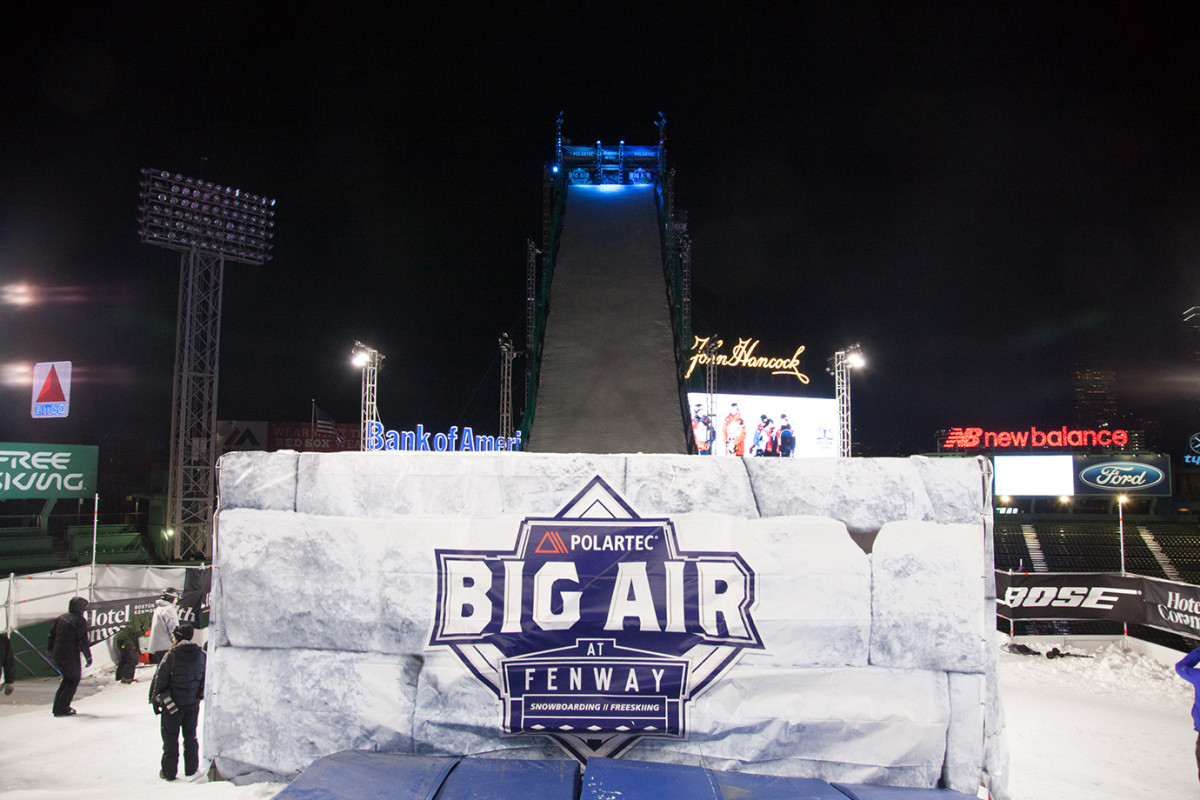
The Big Air ramp from the launch base as the snowboarders are introduced at the snowboarding competition.
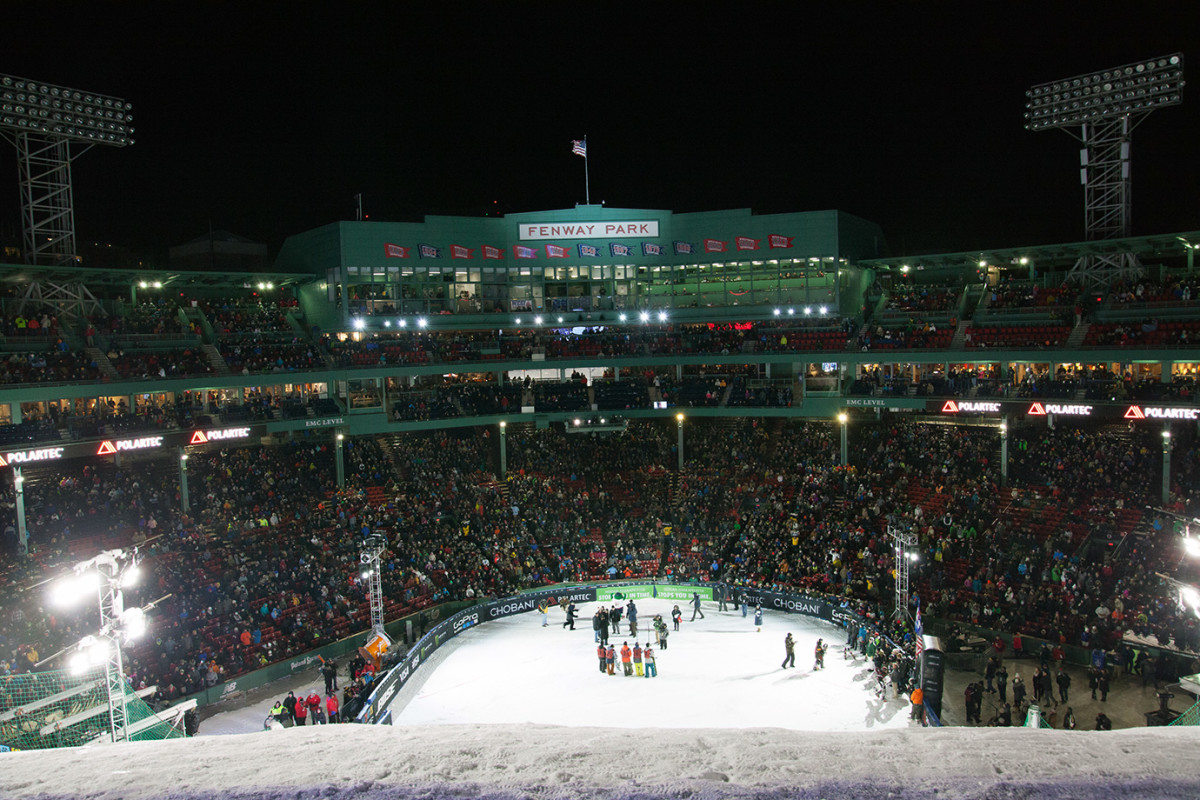
The crowd at Fenway Park for the snowboard Big Air competition, seen from the launch pad level of the jump.
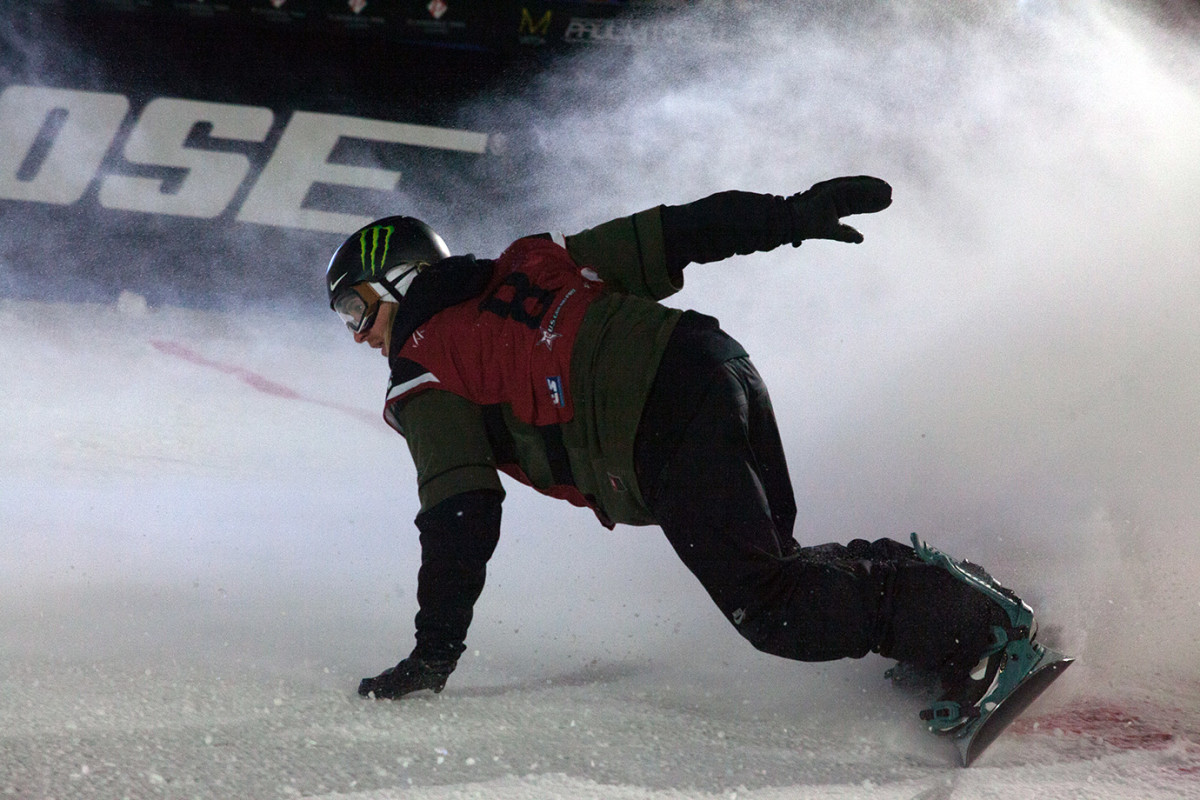
Michael Schaerer slides safely across the home plate drawn at the base of the jump during the first round of the Big Air snowboard final.
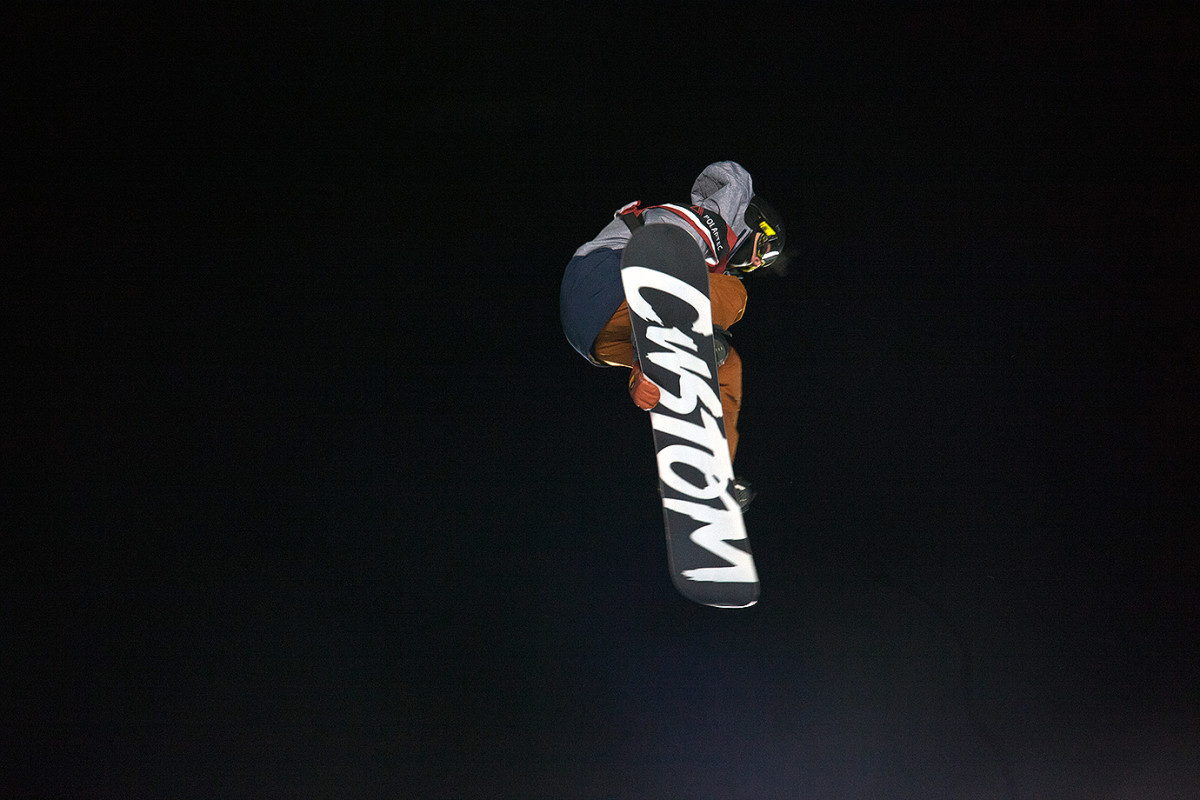
Silver medalist Michael Ciccarelli goes airborne during the second round of the snowboard Big Air competition.
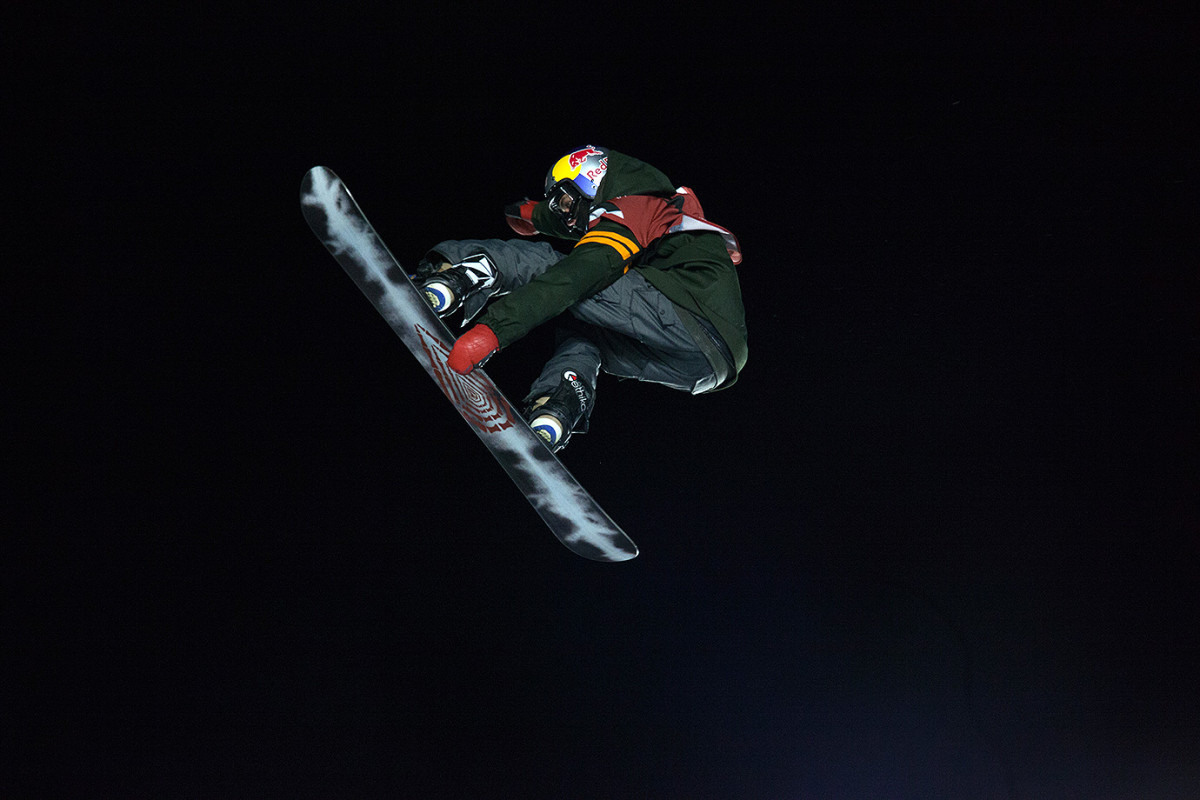
Lyon Farrell, the youngest member of the Big Air snowboard final, takes flight during the second round.
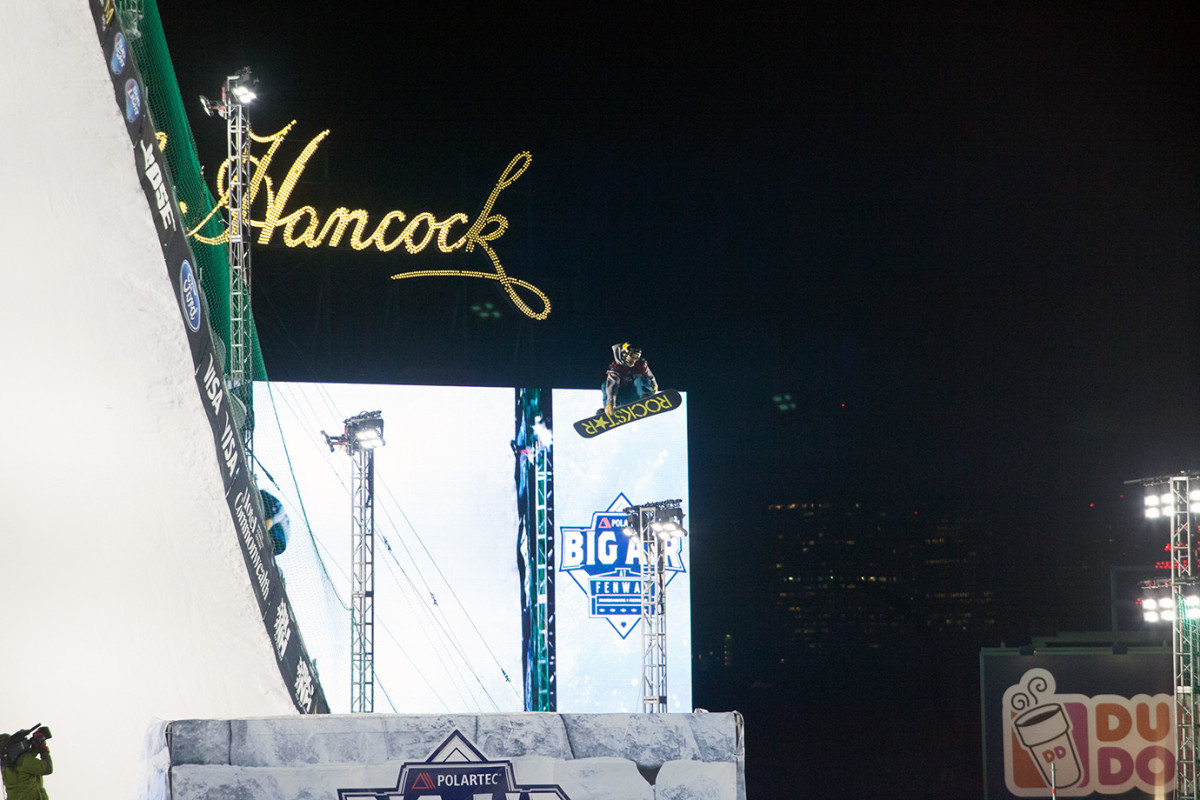
Charles Guldemond, "Chuck G" for short, mid-flight in the second round of the snowboard final.
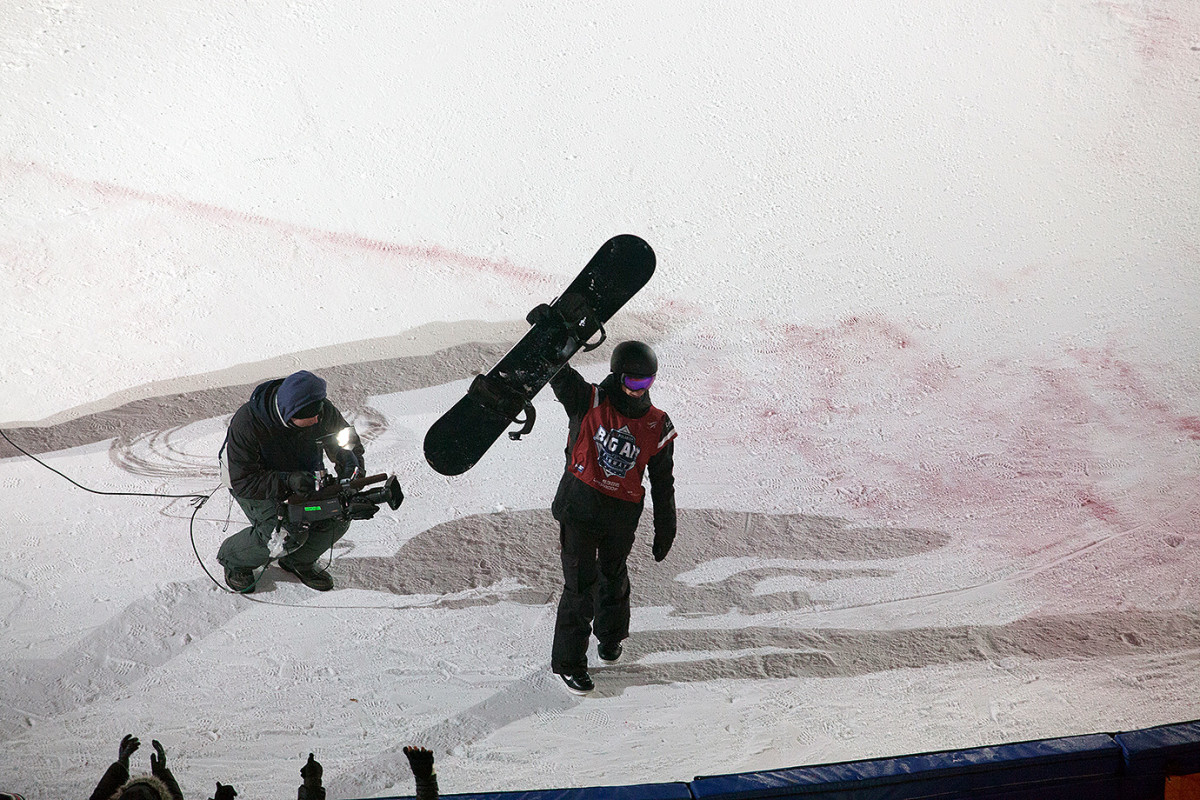
Max Parrot acknowledges the Fenway crowd after completing his second run, which earned him the top score of the competition.
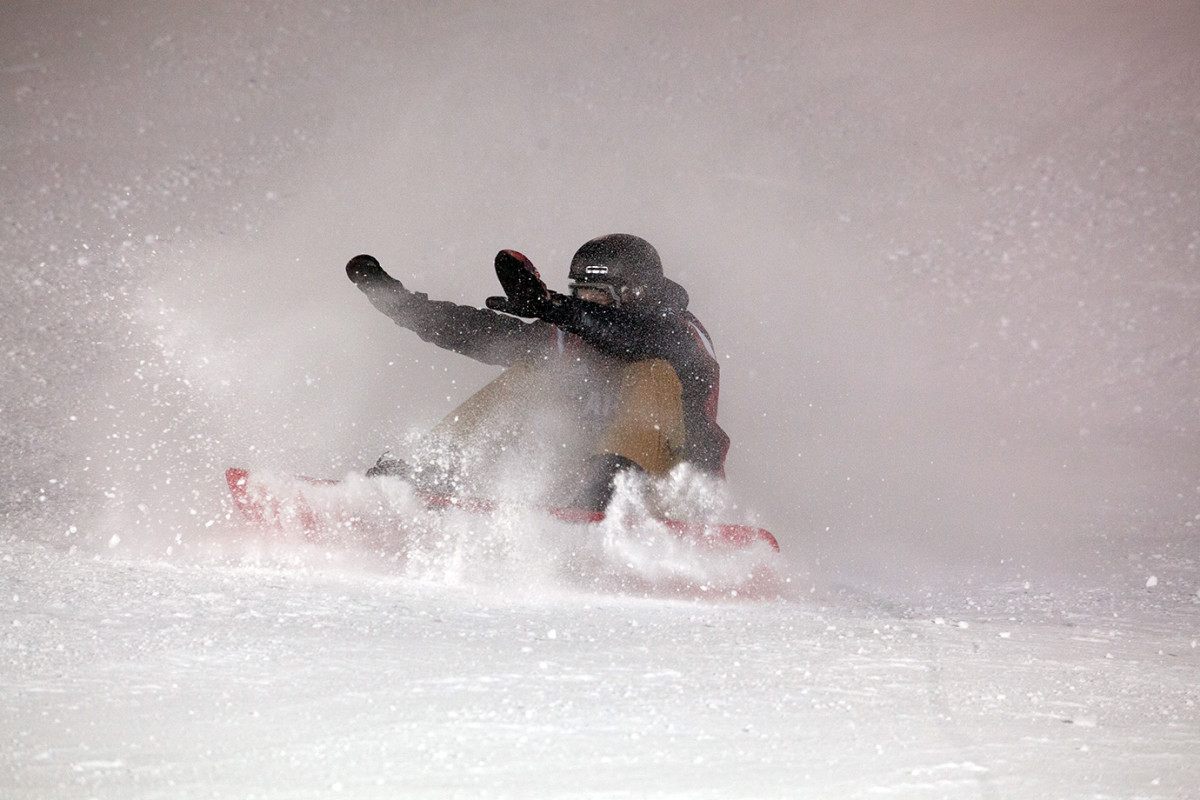
The base of the jump ended quickly after home plate; many riders opted to speed check by taking a seat after their runs were deemed completed to avoid hitting the wall.
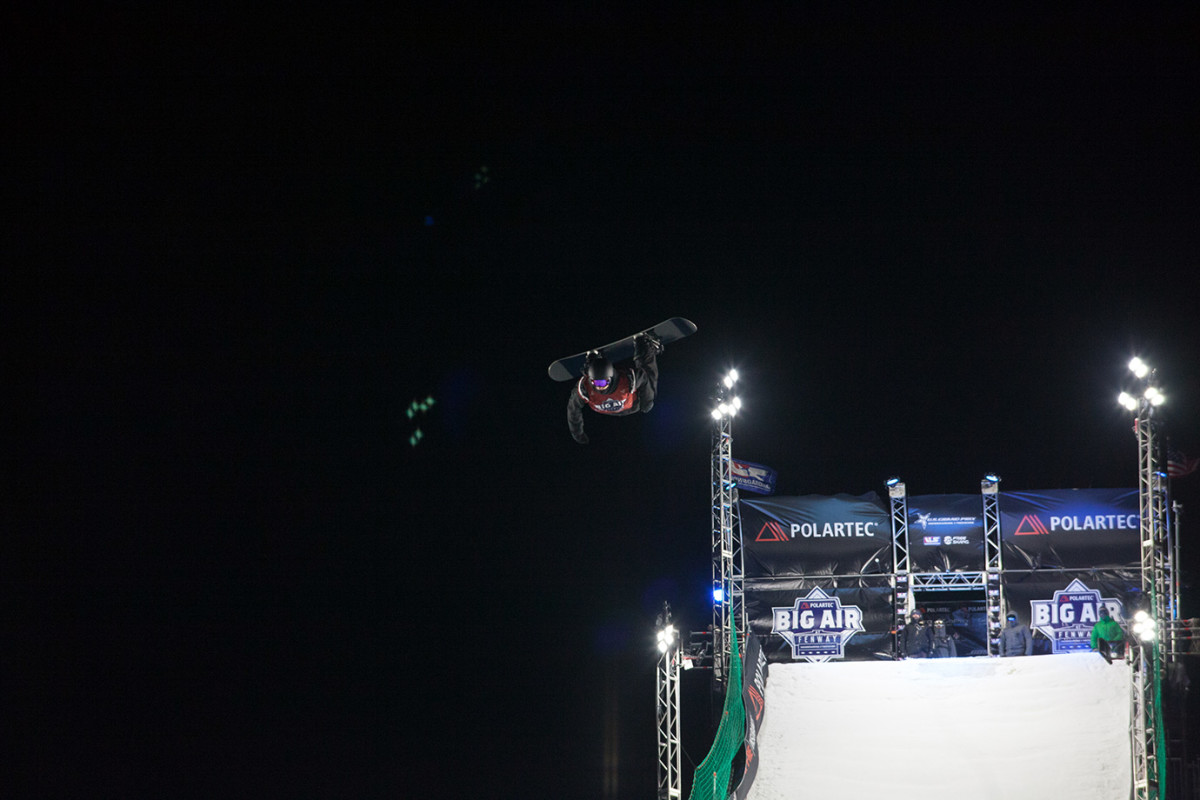
Max Parrot flies over Fenway Park during his third run and the final run of the night.
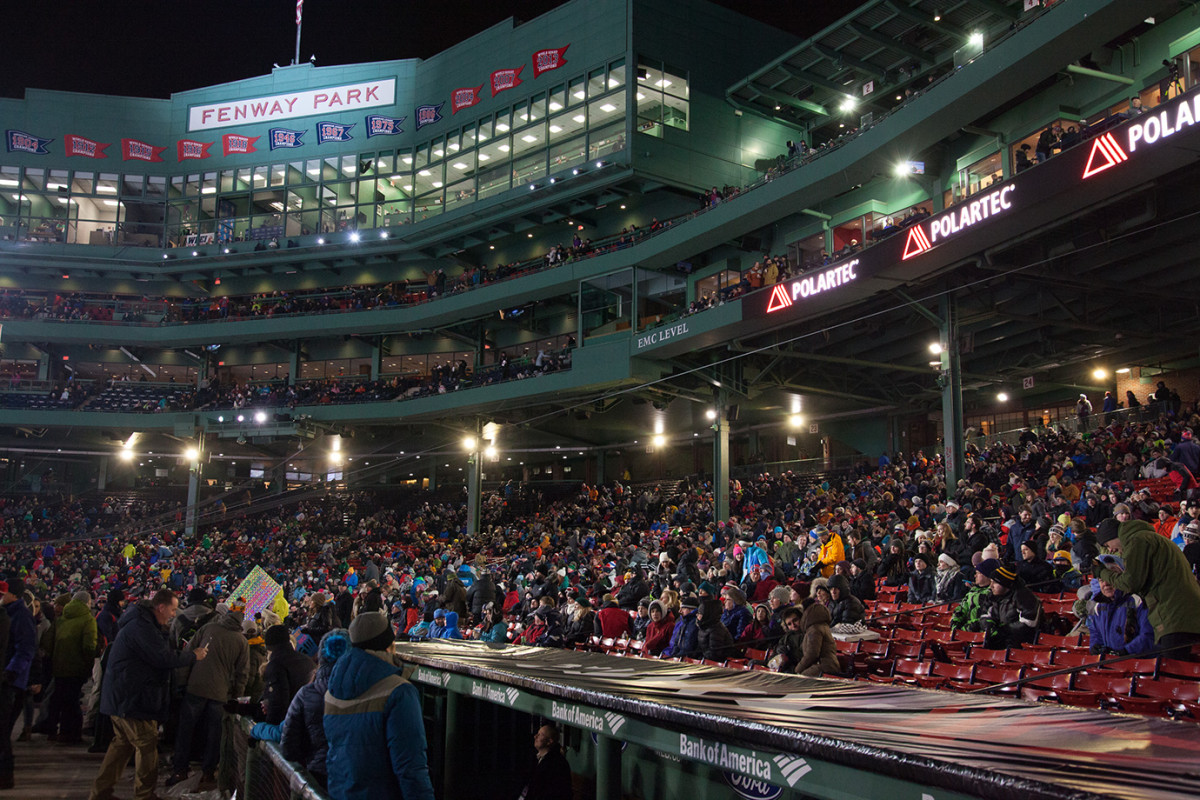
The crowd at Fenway Park grows even larger for the freeskiing competition on Day 2.
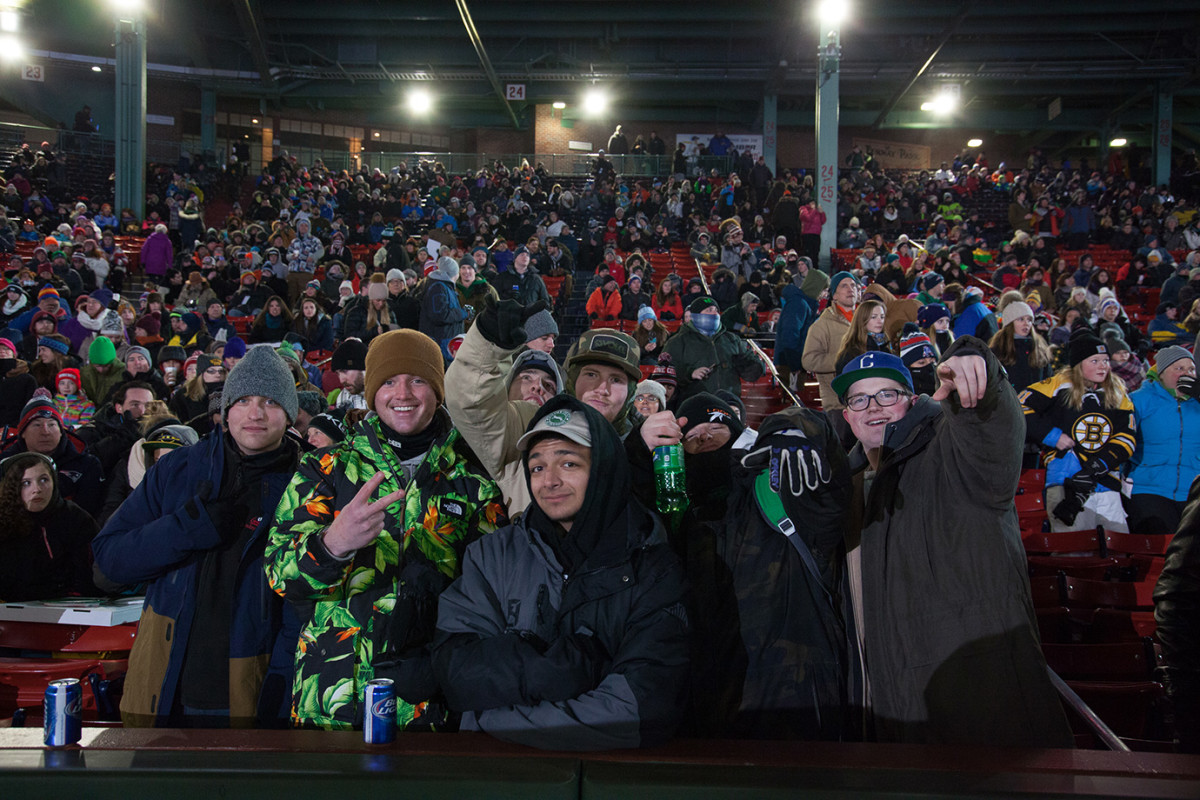
The Boston faithful fill the center of the stadium in anticipation of the skiing Big Air final.
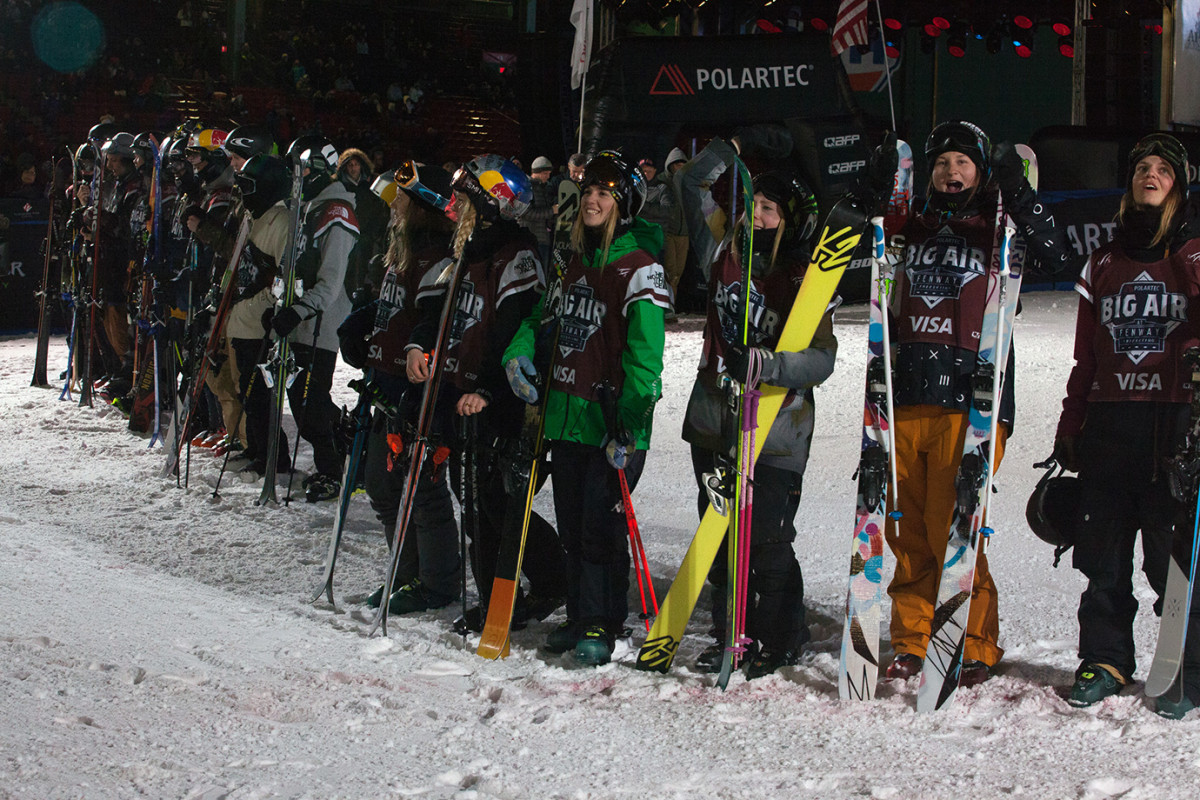
The male and female skiers who qualified for the final assemble at the bottom of the jump for introductions.
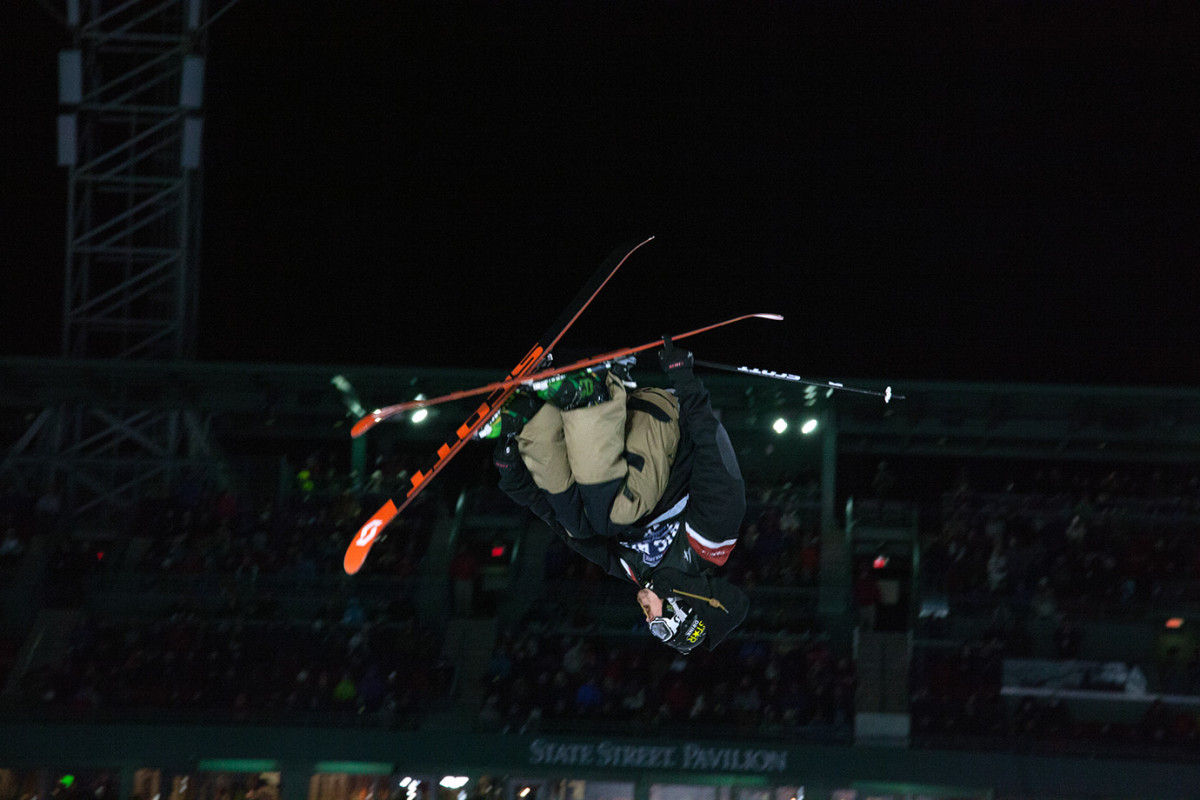
Klaus Finne catches air during the skiing Big Air final.
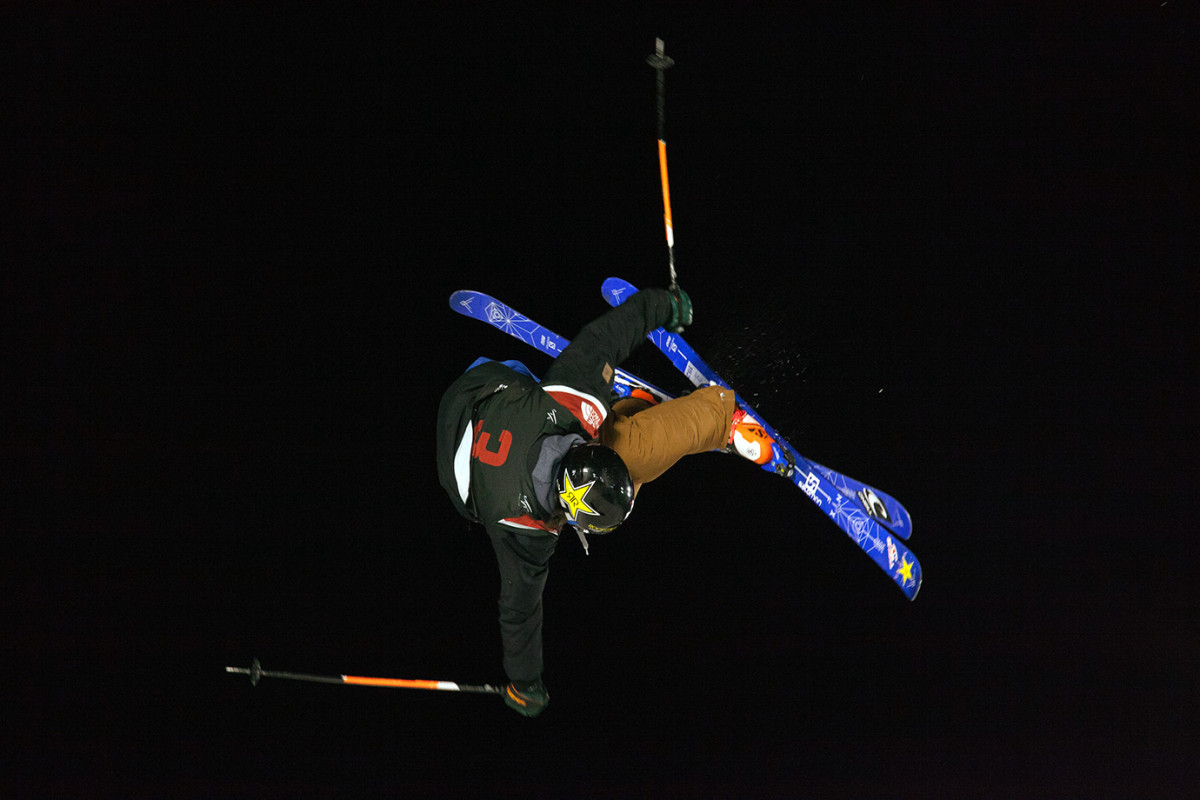
First-place winner Vincent Gagnier during the first of his three high scoring runs.
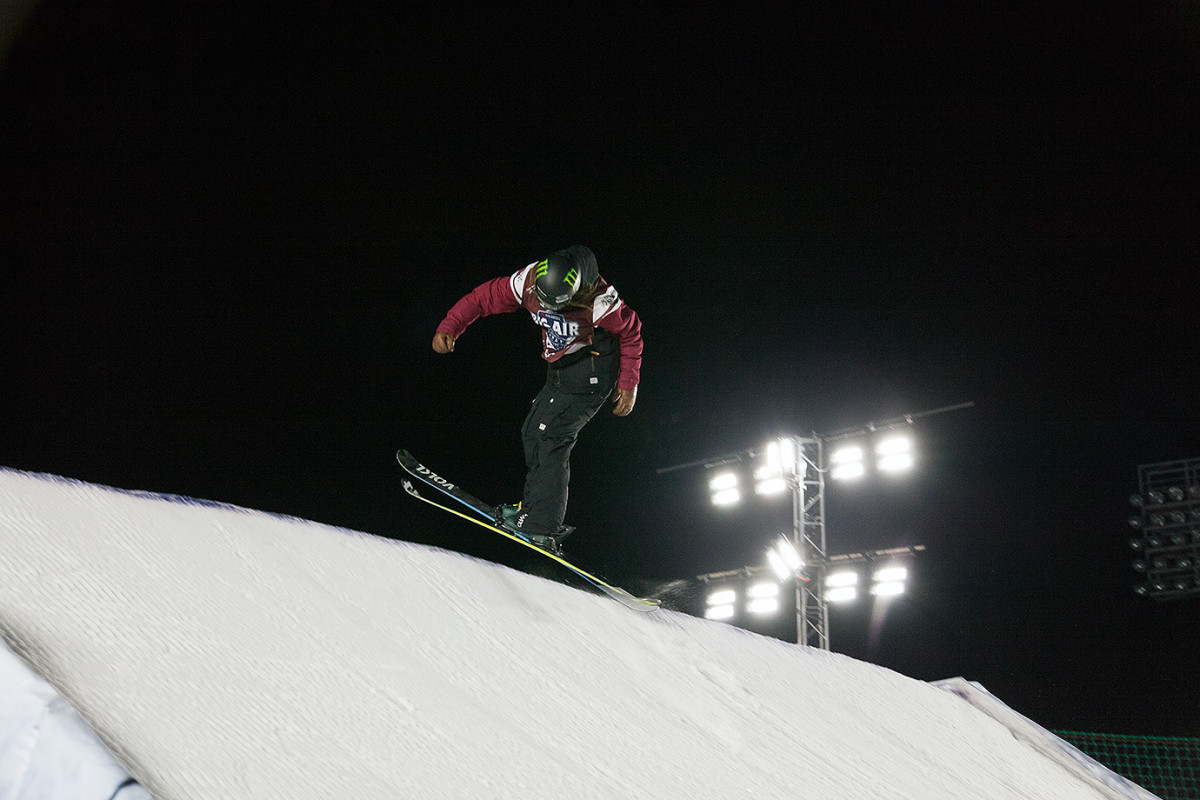
Women’s third-place winner Emma Dahlstrom takes off from the Big Air ramp during the ski final.
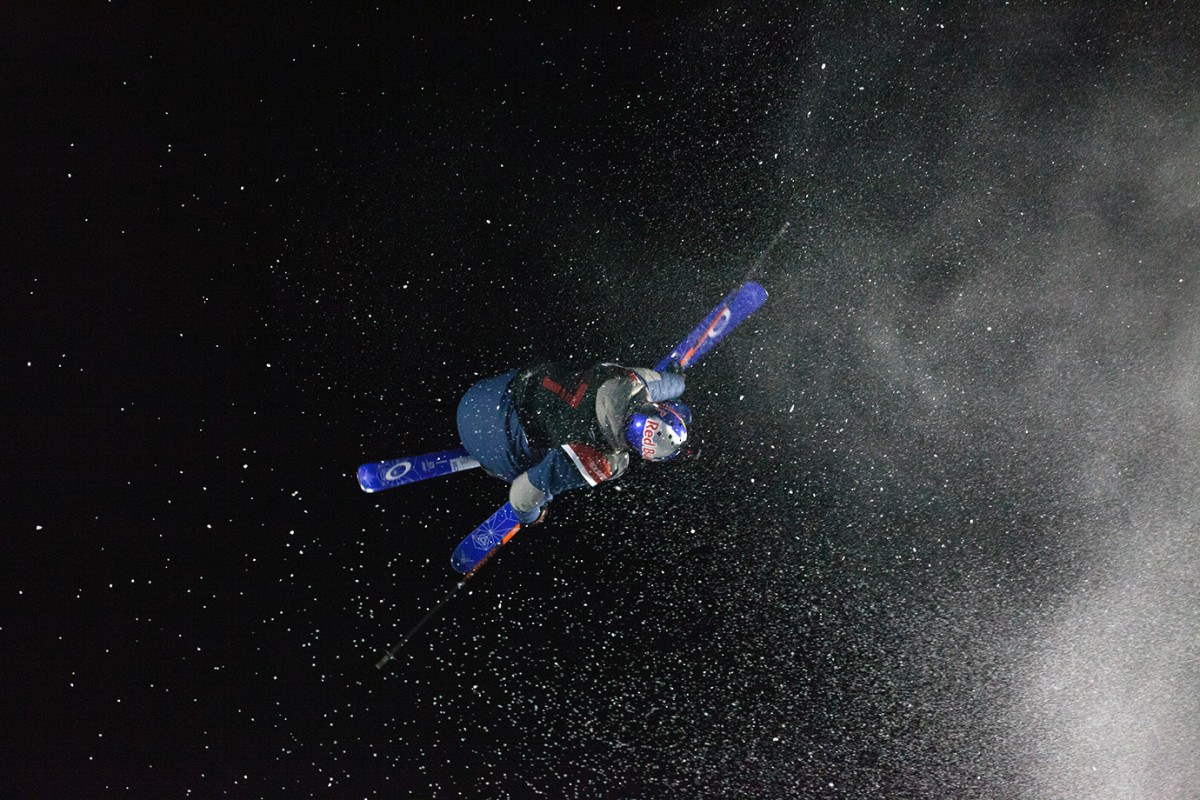
Oscar Wester leaves a trail of powder in his wake during his second run of the Big Air ski final.
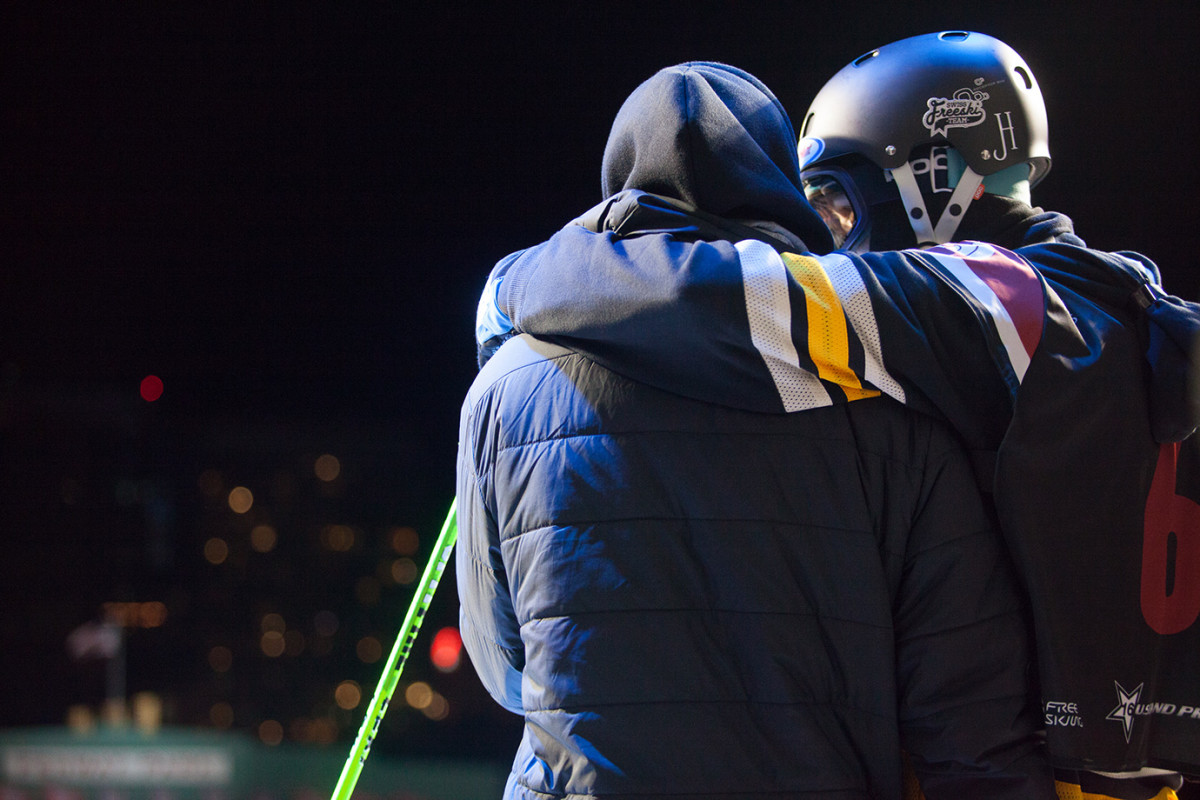
Boston favorite Jonas Hunziker embraces a member of his crew right before his final run.
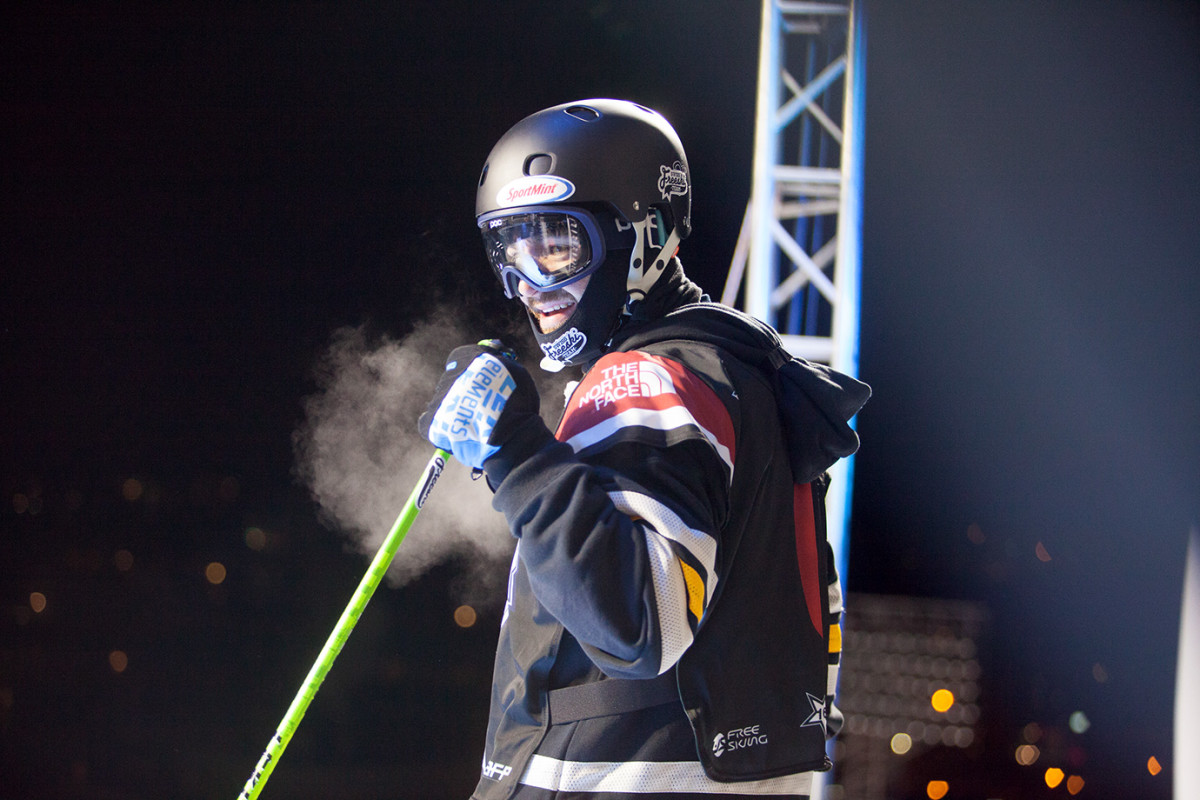
Hunziker, who performed in a Boston Bruins jersey, was all smiles during the moment he took to look down upon Fenway Park before his final run.
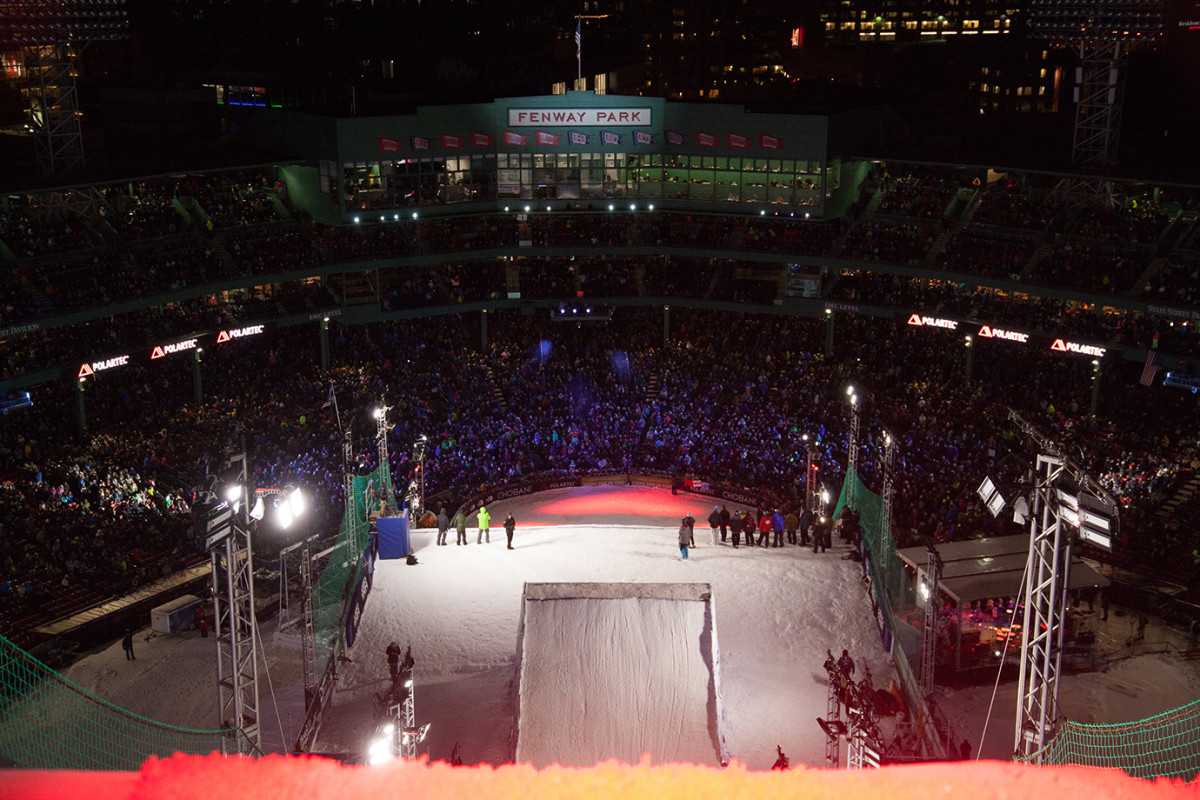
The view of the crowd at Fenway Park from the very top of the Big Air ramp
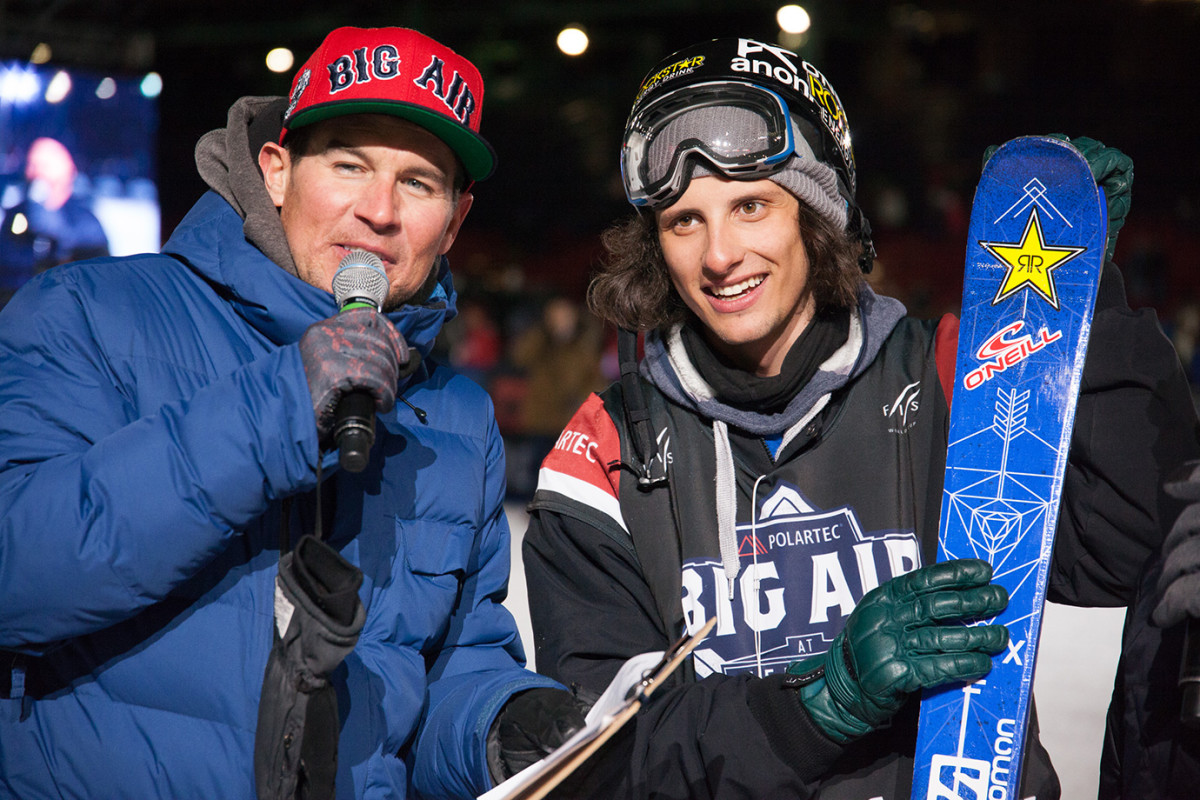
Men’s ski Big Air winner Vincent Gagnier during his interview with Fenway Big Air and X Games field reporter DC.
Innsbruck got kind of crazy because the wind got so bad that the competition was canceled after the second round. We never got [to do] the finals, so in that way it was a disappointment because a lot of riders, myself included, had bigger tricks to throw.
The weather really complicated the event to the point that the scaffolding was swaying so much that we didn’t want to take elevator down to the bottom. We waited for the right moment and rode the jump down to the launch level and took the stairs from that level—it was intense.
RW:The last two years, A+S Innsbruck has had rough weather; rain last year, wind this year. Have those experiences put a damper on that stop in the tour for you?
SS: You always want your riding to dictate how you do in competition, but there is nothing anyone can do about Mother Nature. These things happen and when they do, you must adjust. For me, the weather the last couple years hasn’t taken away from the stop at all. Innsbruck is a snowboarding city. The crowd was massive in the rain last year, and big again despite the wind this year. It won’t always be that way. When we have good weather, everything else we need—the good jump, the crowd—is there.
RW:What are your first impressions of the A+S jump in Los Angeles?
SS: It rained yesterday, so it does look a little sketchy, but we’ll see how it goes. Hopefully they are able to get it ready for the event. Last year the rain on Sunday really affected the skiers. Hopefully we can avoid that this year. Los Angeles was a great crowd last year as well.
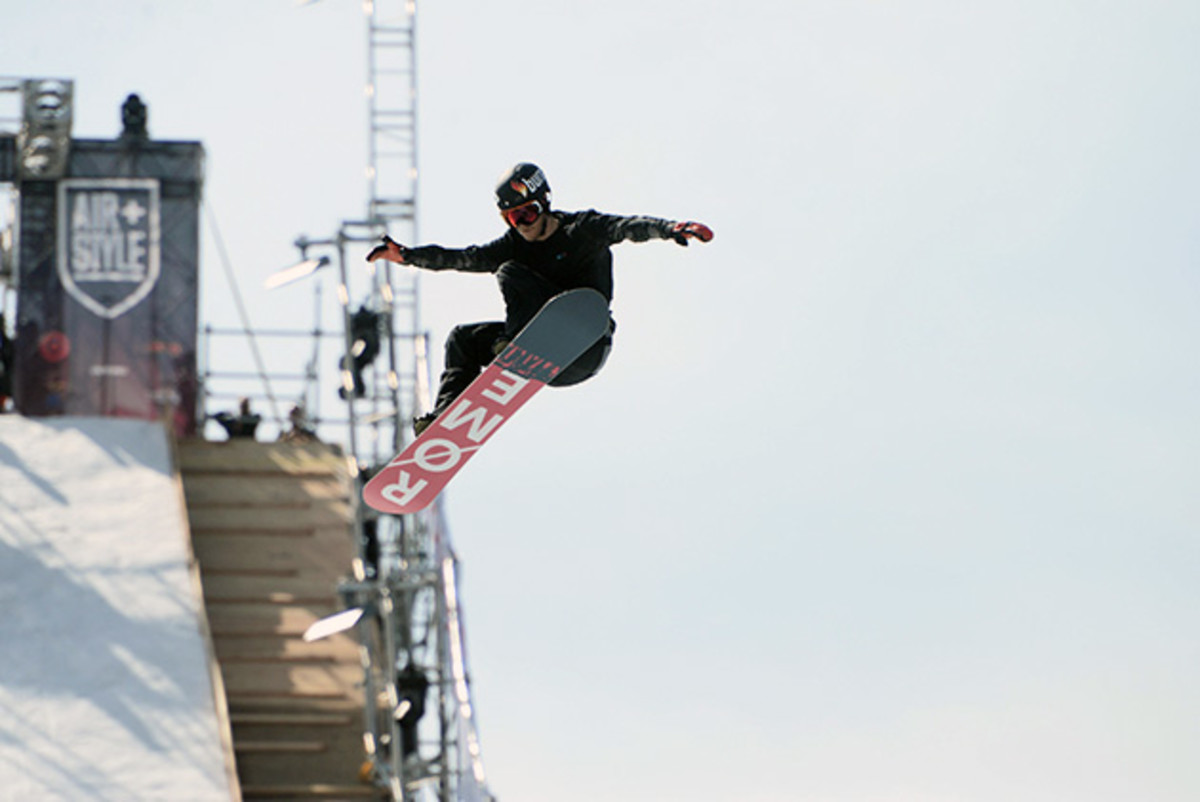
What’s the biggest difference between a natural big air jump like X Games and a jump made of scaffolding like A+S?
SS: Scaffolding jumps don’t always let you go as big as on natural snow on a hill. Sometimes it’s hardest to do your biggest tricks in those competitions, and so style can end up being the separating factor on the scaffolding jumps. The elements, rain and wind especially, also affect man-made jumps much more so, as we saw in Innsbruck.
RW:How has the 2016 season been for you thus far overall compared to the last two seasons when you were competing at such a high level?
SS: I've felt good all season, but the other guys have felt really good all season as well, so the level of competition has been pretty intense all season. A lot more people are on the same level, that elite level, than we’ve seen at one time in the past. So it’s been harder to predict the outcomes of each event because they’ve all been so competitive.
RW:You have an A+S gold medal, but not an X Games gold. Can you compare the two?
SS: X Games has always been the biggest action sports contest. I’ve had a lot of podiums over the past two seasons; I haven’t had too many first places, but I’ve had a few. I have three bronzes and a silver at X Games, but for sure, winning the gold medal at X Games is one of the biggest things that can happen to my career. Every gold medal is significant, because no matter the competition it means you’re the best there. An Air+Style gold medal doesn’t make me want an X Games gold any less.
Intel's new technology 'Curie' finally gives snowboarders hard data
You compete in both slopestyle and big air, but this is solely a big air event. Do you have a preference between the two?
SS: I definitely enjoy riding slopestyle more than big air. I feel like slopestyle shows you as a more complete snowboarder. It’s not like everyone will do the same trick and maybe only one person will stand out. It can get way more similar in big air as compared to slopestyle. More of your own personal riding shows in slopestyle as well.
RW:Speaking of your own style, you’re a more technically inclined rider, but you’ve been able to marry technicality with style. Which one is more natural for you?
SS: My big brother got me into snowboarding. He's always told me how important style was to snowboarding, since from when I was a kid. Because of that, I’m always thinking of style in my runs. Style also just exudes from my body language while I’m riding. It expresses who I am and how I move. I love that side of snowboarding.
I’m always trying to add new grabs and tweaks to my tricks. I want to separate myself from the other guys, and style is a big way that happens. I’m definitely more naturally stylistic than technical. When I try to learn a new trick I try to add style to it right away. It makes it more difficult to learn, but more fun to learn because you know it’s yours.
RW:What are some tricks you’ve learned recently we could see at Air+Style LA. How do you best learn new tricks?
SS: Right now the level is so high it’s hard to learn new tricks. If you want to learn a new trick these days, you need a jump as big as the one at X Games, but there is no jump like the one at X Games. You only ride it in Aspen or Oslo, or at a photo shoot in the spring. You can kind of learn a trick by just thinking about it over and over in your head.
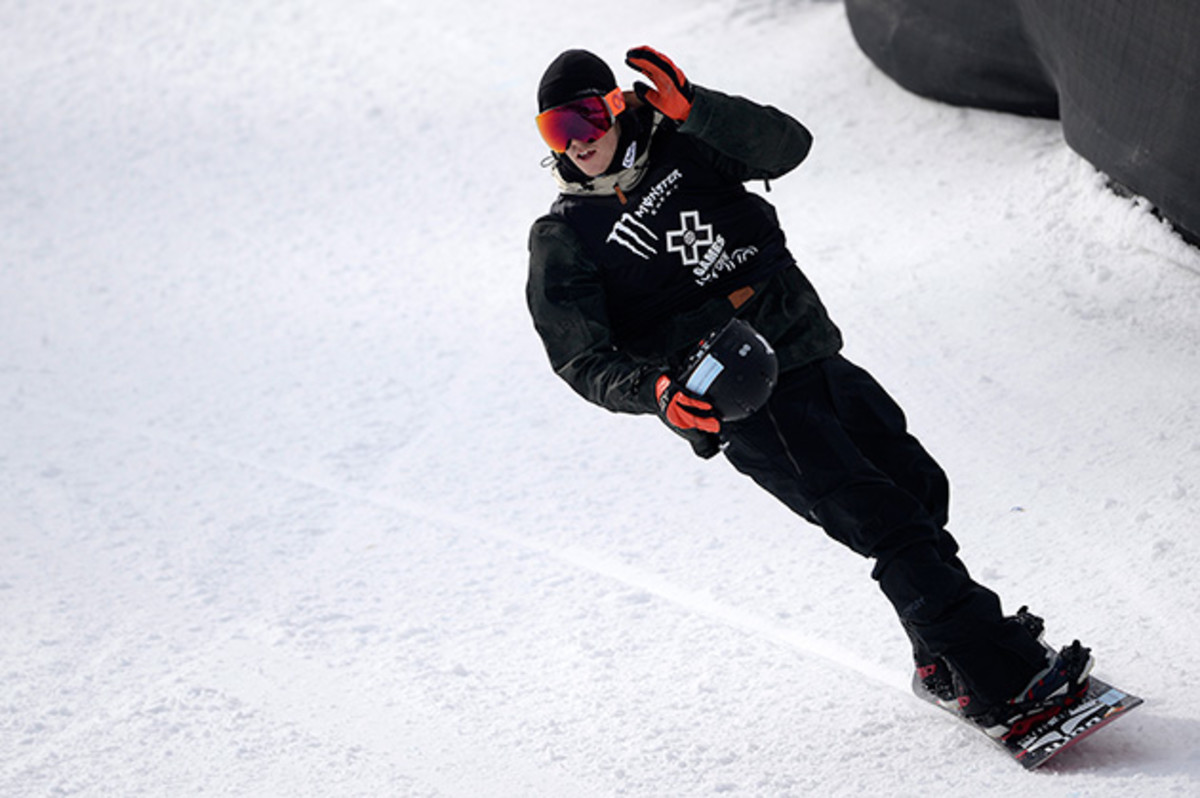
For me, if I feel like I can do the jump in my head, feel like I’ll most likely put it down in reality first or second try. I have a few things in my head. But I don’t know if I want to say them out loud—[talking about it] before I’ve attempted it for real is bad luck.
RW:To your point, Max Parrot has mentioned to me multiple times that he wants to try to bring an 1800 into competition. How important is technical progression in snowboarding at these events?
SS: I’ve seen a couple people beginning to attempt quadruple corks and 1800s in practice. I’m sure we are going to see them, especially on the big air jump at X Games. Personally, I kind of hope it never reaches the point that those tricks become the standard for competition. I don’t want snowboarding to take the spinning and flipping too far. There are other ways to progress. We need to be adding different grabs and more flavor to the tricks that we already have before we make our eyes pop out.
RW:Do you feel yourself reaching that elite level of snowboarding, the level of the riders that you grew up admiring?
• Subscribe to get the best of Sports Illustrated delivered right to your inbox
SS: Since 2014, every year has been very good for me. That was the season that I’ll say that I felt myself transform from a boy to a man. I started landing my runs more often than not and started coming into competitions as a favorite and being able to follow up. I stopped being okay with just qualifying for a competition. I started making the finals my goal and expectation and trying to podium and win. And since 2014, I’ve been at least on the podium of nearly every contest I’ve been in.
Now, the goal is nothing other than gold. It’s been a crazy two years. Tough to follow up, but I’m looking to keep the good times rolling here in L.A.
